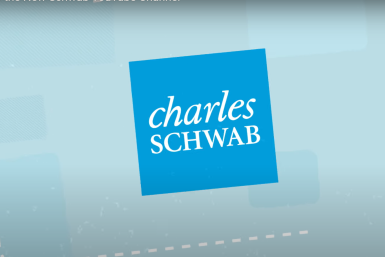What Is LTE-U? FCC Green Lights First LTE-For-Unlicensed Devices
On Wednesday, the Federal Communications Commission gave the go-ahead to several companies to begin activating a wireless technology called LTE-for-unlicensed devices—better known as LTE-U.
The concept behind LTE-U is to allow mobile carriers to use the unlicensed 5GHz band that is currently used by Wi-Fi devices. Some frequencies within the band go unused, and the FCC decision will allow carriers to make use of that spectrum to boost coverage and improve short-range connection speeds within their network.
T-Mobile will be the first carrier to make use of the new technology, with the intention of deploying it as early as this spring. The carrier has been testing LTE-U technology since December 2016, and T-Mobile customers will be able to make use of the underutilized, unlicensed spectrum on the 5GHz band.
Customers won’t notice any change other than the potential promise of improved speeds and increased capacity across network. According to T-Mobile, its embrace of LTE-U will also help the company bring its Gigabit LTE to fruition across the country.
Qualcomm, one of the major backers of LTE-U technology, told International Business Times, “We are extremely pleased with today’s FCC actions, which represent a major step forward for American consumers, demonstrate strong US leadership in mobile broadband, and recognize years of research and development and inventions by Qualcomm and its partners.”
According to the company, the FCC decision will “ensure that unlicensed spectrum remains open for permission-less innovation to enable faster, better mobile broadband and that new technologies will demonstrably co-exist successfully with incumbents.”
While mobile carriers and wireless equipment makers like Qualcomm have been pushing for deployment of LTE-U, not everyone has been enthused by the idea. In 2015, when conversations about LTE-U were just getting started, the Wi-Fi Alliance argued the technology would interfere with Wi-Fi networks.
The Wi-Fi Alliance—which includes companies like Apple, Microsoft and Intel among its sponsors—is industry trade group that is tasked with certifying equipment and making sure wireless equipment doesn’t interfere with other devices operating in the same frequency. The group asked the FCC in 2015 for more time to evaluate potential interferences of LTE-U.
Microsoft also raised concerns over the technology, noting that it worried LTE-U would "degrade the performance of services delivered over Wi-Fi and other technologies that rely exclusively on unlicensed spectrum."
The National Cable and Telecommunications Association (NCTA) presented its belief that widespread deployment of LTE-U and related technologies like Licensed Assisted Access (LAA) would “severely decrease” Wi-Fi network performance.
Cable industry research showed LAA would lower the Wi-Fi transmission success rate "by 77 percent with 15 nearby consumer Wi-Fi devices, and by 88 percent with 20 nearby consumer devices."
Qualcomm’s own testing did not find this to be the case. According to the company, not only does LTE-U not interfere with Wi-Fi, but it found Wi-Fi access points actually experienced improved throughput when sharing a channel with LTE-U as opposed to sharing it with another Wi-Fi access point.
The FCC authorization of LTE-U will put these studies to the test. According to Phillip Berenbroick, senior policy counsel at open internet advocacy group Public Knowledge, it’s not clear how exactly LTE-U will impact consumers at this point.
"It is unclear how permitting LTE-U operations in the 5 GHz band will impact consumers," he told IBT. "What is clear is that the FCC has decided to take this calculated risk with no plan if LTE-U operations drastically alter the ability of consumers to continue to relieve both their wallets and their ISPs networks by offloading traffic to Wi-Fi. "
While the FCC noted that its decision took into account the views of LTE-U and Wi-Fi stakeholders, Berenbroick noted the FCC’s plan “only requires LTE-U devices to share fairly with Wi-Fi where Wi-Fi signals are already strong, but weak Wi-Fi signals can be used often by consumers." He pointed to examples of low-income students who only have access to broadband—a necessity for some homework assignments—through public hotspots.
Wi-Fi already offloads 80 percent of mobile device traffic and Wi-Fi networks and unlicensed spectrum are already carrying the vast majority of mobile device data, so any potential interference or additional burden on those networks could cause issues for consumers.
"The FCC is rolling the dice that this plan will not hamper new Wi-Fi-based mobile networks and municipal hotspots, basic connectivity and Wi-Fi offloading that both fixed and mobile broadband consumers rely on, and innovative new products and services that depend on the availability of ubiquitous and reliable unlicensed spectrum," Berenbroick said.
© Copyright IBTimes 2024. All rights reserved.











